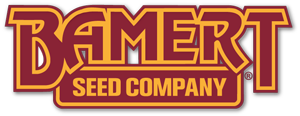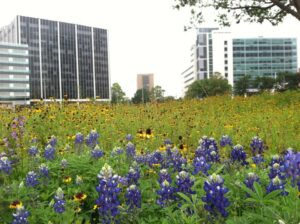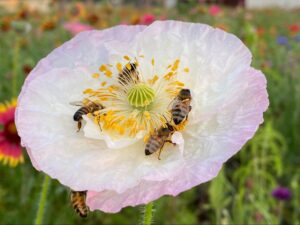There’s nothing more frustrating when checking on ground after planting native grass seed or Texas native plants than to have your gaze met with barren soil. The familiar question is, “Where’s my grass?” As reclamation specialists, Bamert doesn’t just answer the question when a landowner is facing disappointing results. Instead, we strive to educate our customers about potential issues before they become a problem. There are several important components that help native grass seed successfully establish:
- Proper Equipment
- Correct Timing
- Site Preparation
- Weed Management
Here’s a look at why each of these areas is vital to Texas native plants.
Proper Equipment – Using the wrong equipment can result in poor seed-to-soil contact or seeds being planted too deep. A native grass seed drill is the preferred application method because it distributes the proper seeding rate at the appropriate seeding depth. Another application method involves broadcasting the seed, followed by rolling or cultipacking to ensure good seed to soil contact.
Correct Timing – Timing is crucial when planting Texas native plants. Heat and moisture are key for seed germination and plant establishment. If either factor is missing, the seeds will not germinate. Warm season grasses planted in the dead of winter will not germinate and establish until the site’s soil temperature is consistently 60-65 degrees Fahrenheit and adequate moisture is present.
Site Preparation – Poor site preparation is another reason native seed plantings fail. Ideal seedbeds should be firm and weed-free. A firm seedbed should give approximately ¼ of an inch when walked on. Sites that are too soft will need to be cultipacked before seeding. On the contrary, soil compaction is a major issue on many sites that are to be revegetated. If soil compaction is an issue, the site will need to be decompacted before the area is seeded with Texas native plants.
Weed Management – Uncontrolled weed pressure can also lead to an unsuccessful seeding. Unfavorable vegetation can be kept under control by following a developed weed management. Weeds can be controlled with both preemergence and postemergence herbicides depending on the type of weed to be managed and the types of native grasses planted. Shredding or mowing the site is another option for weed management.
There are various reasons a Texas native plant seeding can fail. That’s why Bamert Seed Company takes pride in addressing these concerns and educating clients how to avoid these setbacks. Our specialists are available to ensure your native grass seed planting will be as successful as possible.



